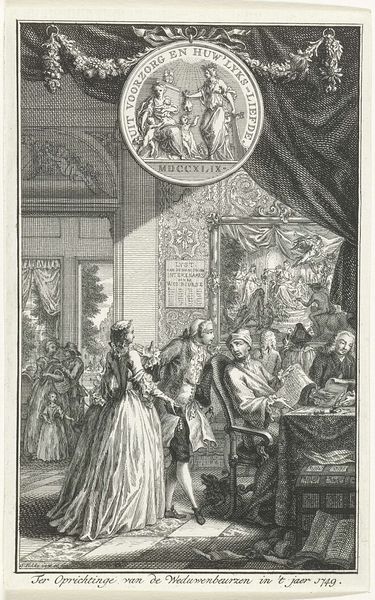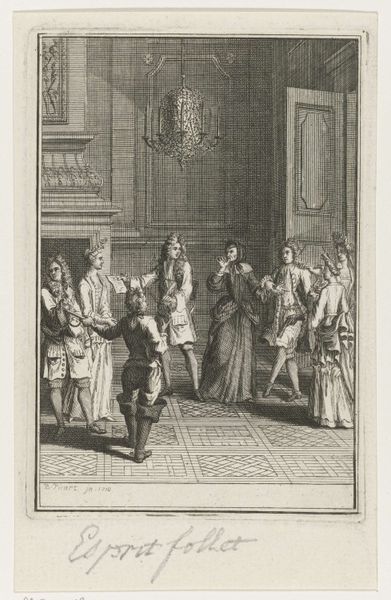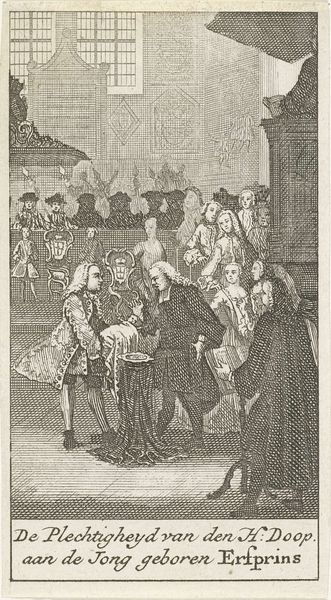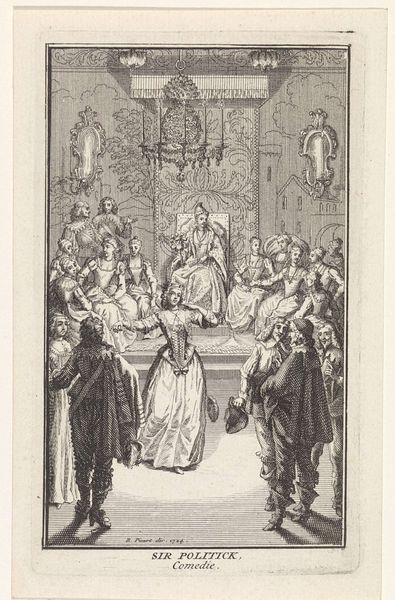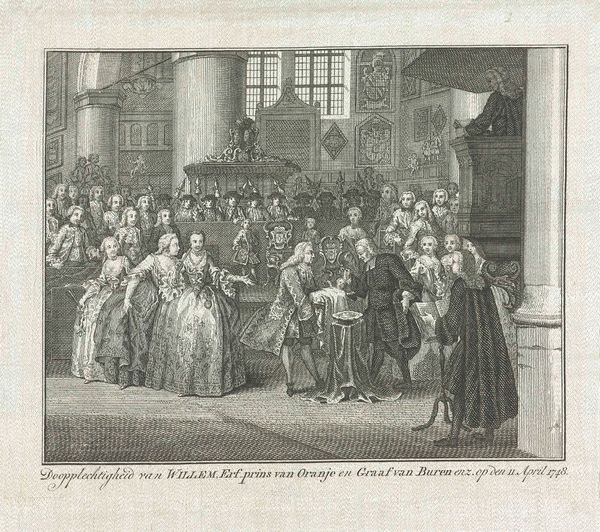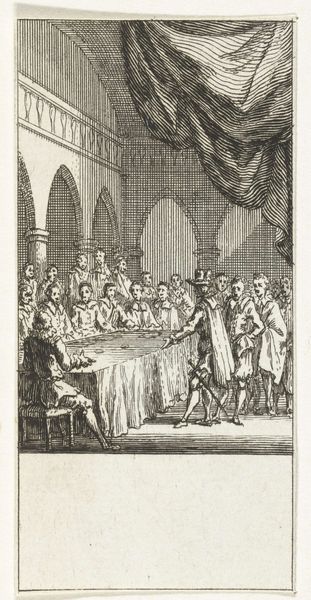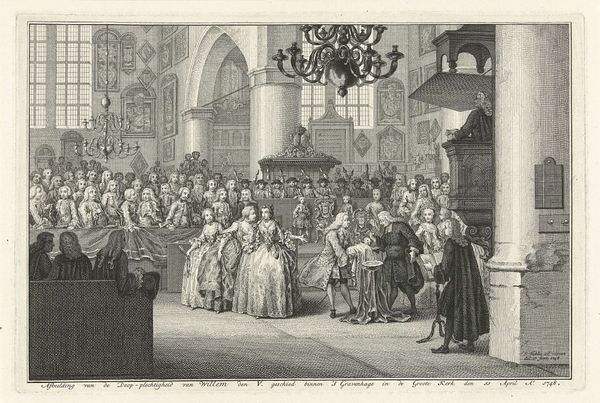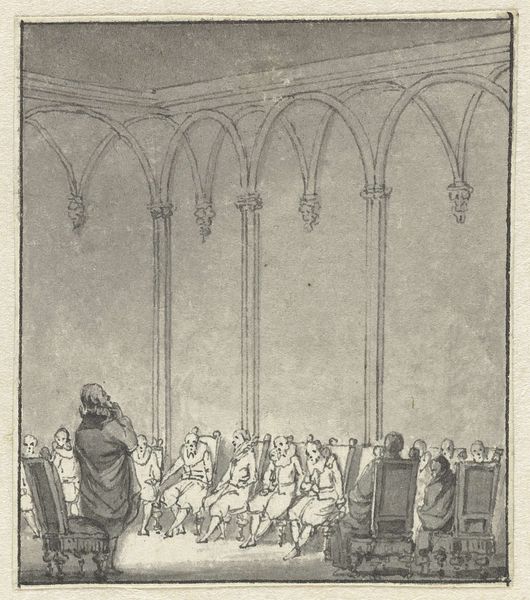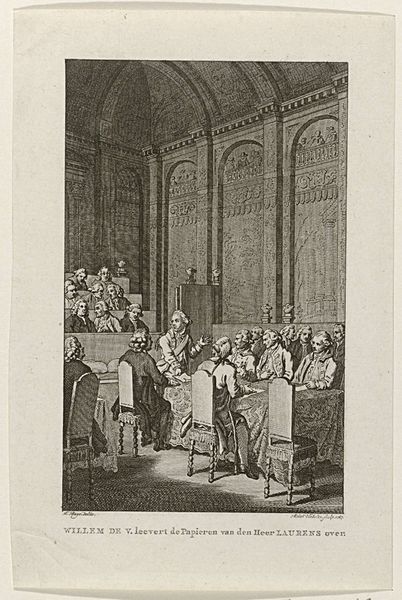
Doop van Willem George Belgicus, erfprins van Nassau-Weilburg, 1761 1760
0:00
0:00
print, engraving
# print
#
pen illustration
#
genre-painting
#
history-painting
#
engraving
Dimensions: height 181 mm, width 131 mm
Copyright: Rijks Museum: Open Domain
This engraving from 1761 by an anonymous artist depicts the baptism of Willem George Belgicus, the hereditary prince of Nassau-Weilburg. It gives us a window into the social and institutional rituals of the Dutch elite during the 18th century. We can see how the baptism, a religious sacrament, is transformed into a public spectacle. The church, with its imposing architecture and crowded pews, becomes a stage for the performance of social status and dynastic power. The clothing and posture of the attendees also speak volumes about their social standing. This image isn't just about religion, it's a political statement, emphasizing the importance of lineage and succession within the ruling class of Nassau-Weilburg. To fully understand this piece, it is important to examine court records, religious documents, and genealogical archives. These sources help us decode the symbolic language of the image and understand how the rituals and institutions of the time reinforced existing social hierarchies. In short, art is always contingent on social and institutional context.
Comments
No comments
Be the first to comment and join the conversation on the ultimate creative platform.

